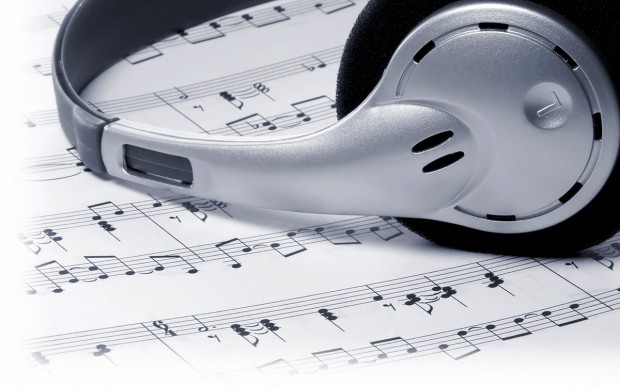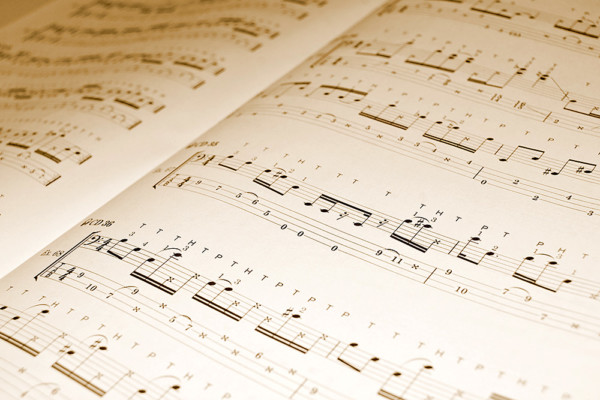Remembering Written Bass Lines

Q: When I learn a song by ear, I can generally memorize it really well, probably because of all the work that’s gone into learning it. My ear is not great and concentrating on actually listening is harder to do than it sounds! I sometimes miss little bits here and there.
However, when I read from a piece of music (generally notation with tab, as I’m still trying to learn to read music properly), I can play it note for note, but when I come to play it without that piece of sheet music I am completely lost! I hear this is a common occurrence for professional sight-readers, so I’m not surprised it happens to me.
Do you have any tips on improving my:
1. Musical memory playing from sheet music, other than scrapping the music sheets and learning by ear?
2. Ear training?
3. Sight reading?
A: I’ve touched on many of these subjects before, so I’ll include some links to additional columns to reference.
Internalizing and memorizing notated music is a fairly common issue among players, like myself, who tend to learn by reading first, memorization later (although I think we may be in the minority). Even when transcribing tunes or lines, I tend to write everything down and then practice the written line. While this works well for me, I have had to take certain steps to memorize material when I need to be “off book” for a gig. The key is repetition. There really is no shortcut, but I do have my own process for it.
Here is my step by step process for the musical memory part of your question:
- Learn to play the piece well in it’s written form.
- Slowly start to abbreviate your chart. Work on memorizing any specific unison lines or licks, any specific bass lines that are a crucial part of the tune (as opposed to parts where you might just play to the changes), etc.
- For me, this usually means scrapping my notated parts and making a cheat sheet with just chord symbols. At this point, I’ll start practicing the tune and make sure that I have all of my specific parts down pat and only use the cheat sheet as a reference guide.
- Then, I’ll start turning over the music and trying to play the tune by memory. If I get hung up somewhere, I’ll usually try to find it by ear. I usually can, but if I must, I’ll refer to my chord chart, drill that part a few times and then start over without sheet music of any kind.
- Continue playing those songs over and over again until you couldn’t forget them if you tried. You may get to the point where you think that you just can’t play that tune one more time but, if you let enough time pass, you very well may forget bits and pieces. I run through entire sets for gigs multiple times before any tour if I need to be off book.
The same holds true for music that challenges me technically. I’ll run it until I’m sick of it, and then run it some more. The goal for is not to have to think on the gig. I want to be able to do it in my sleep. This also serves to protect us from real life live music situations. If the sound is bad or if one instrument or another gets lost in your mix, for example, you’ll still be able to play the tune properly. We are in a protected environment when we are in the shed, and there is always something that can go wrong on a live gig and, if you aren’t sufficiently prepared, the slightest thing can really throw you off!
Here are some great columns addressing memorizing music:
Ear training is something that you will naturally develop to a certain extent over time, the more you play. However, there are quite a few ways to put a turbo-boost on the process.
- Learn tunes by ear. I’ve mentioned a number of times before that I love making a playlist in iTunes and then playing along in real time, trying to learn the tunes as they happen with the goal of having it somewhat together by the end of the tune. I may choose to focus on one song for a while; looping the tune over and over again until I’ve got every little bit of it down. Or, I may choose to loop a hand-full of tunes, thereby making things a little trickier for myself as I’ll likely forget much of what I just learned as I start the next song.
- Training with your instrument (or there are apps that do this). Practice singing your melodic exercises (scales, arpeggios, etc.) this helps you to really learn to associate the sounds with the shapes on your fretboard. You can also practice playing different intervals; for example, play a C and then practice singing and playing half steps, whole steps, minor 3rds, etc. all the way through the chromatic scale. Practice hearing the notes in your head and singing them even without the instrument. Practice singing scales. All of this helps you to better hear intervals.
Here is a column I wrote on ear training.
Sight reading is one of those things that you really have to work on most every day. There is no skill that better exemplifies the phrase “use it or lose it.” I encourage any of my students who really want to work on their reading to practice reading for 30 minutes a day (more, if possible). I have them focus on notated notes as well as notated rhythms. I encourage practicing rhythms out of drum rudiment books as well as by playing written Latin bass lines. I have them work on classical etudes in bass clef and transcribed pieces of music. Read anything and everything. Players who strive to become freelance or session musicians should also become comfortable with both treble and bass clef. Personally, I prefer to work on one at a time, but as you advance, it’s a good challenge to find music that shifts between clefs (John Patitucci’s books often switch clefs when moving to the higher register, for example).
Here is an column I wrote devoted to sight reading.
The most important thing with any of this is to be patient. Focus well and make it a part of your daily practice and the skill development is inevitable!
Have a question for Damian Erskine? Send it to [email protected]. Check out Damian’s instructional books, Right Hand Drive and The Improviser’s Path.


